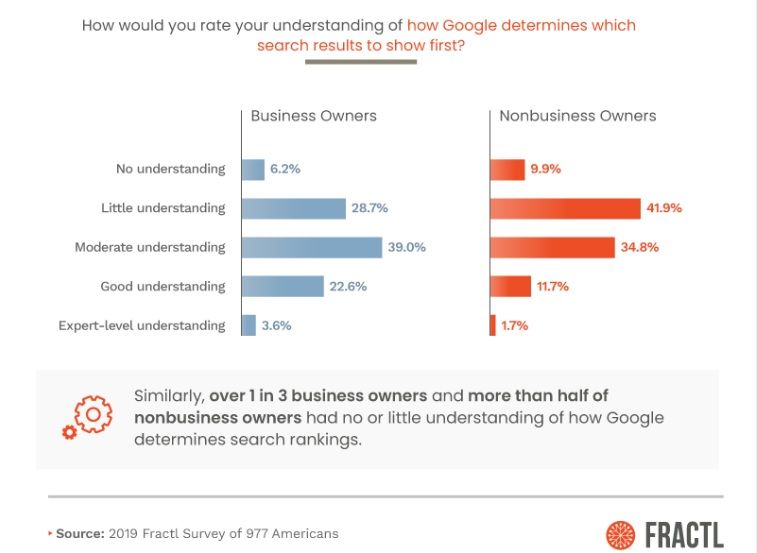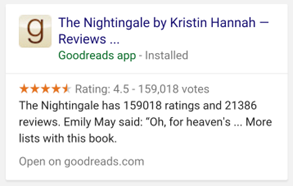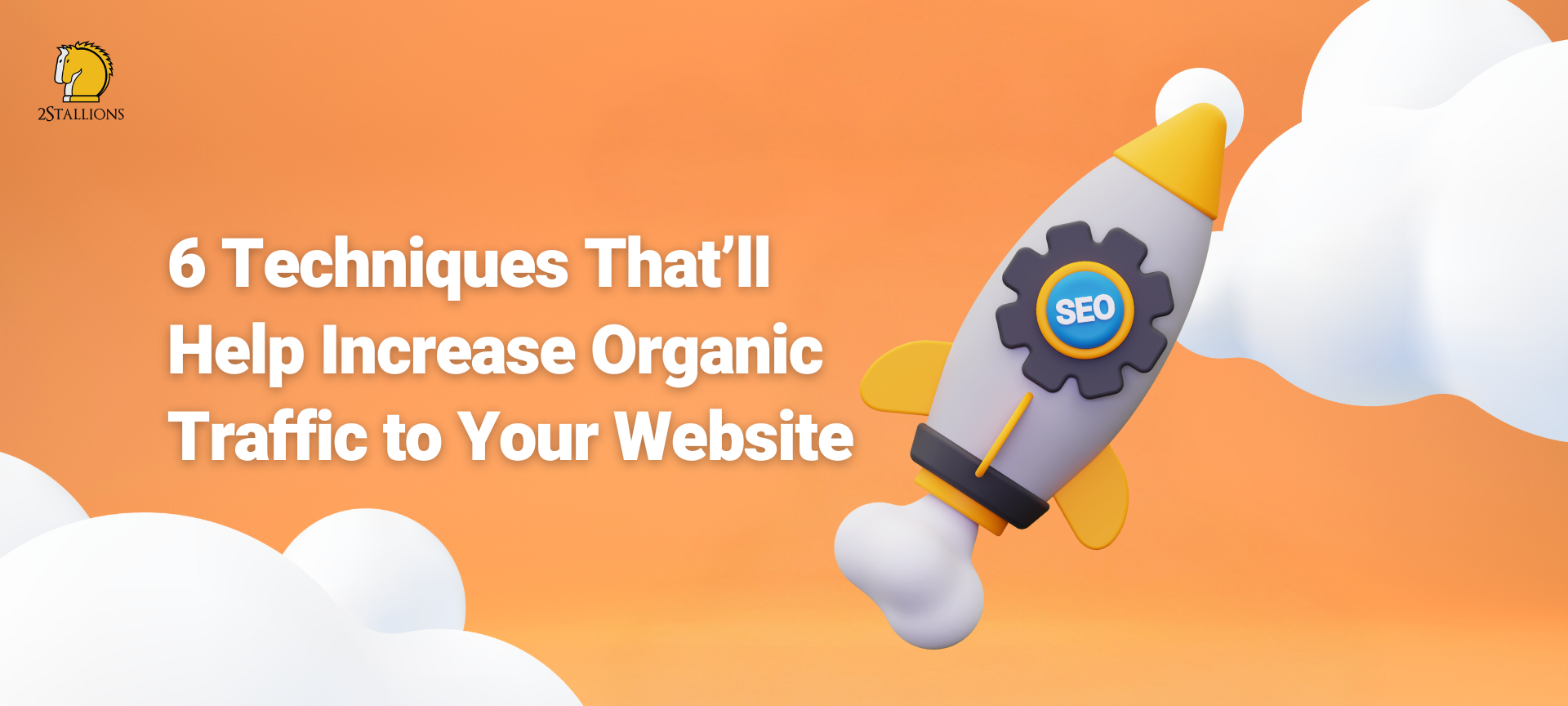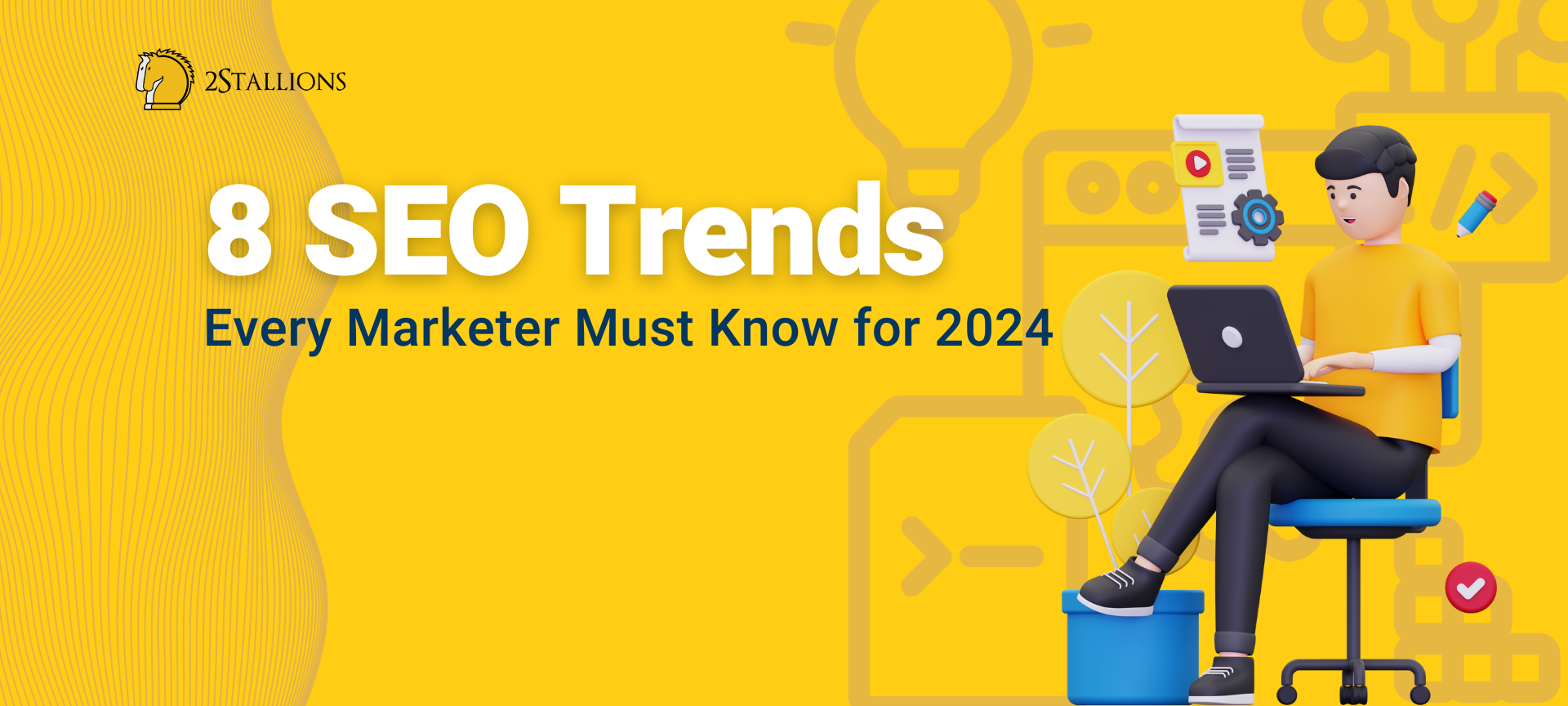SHARE
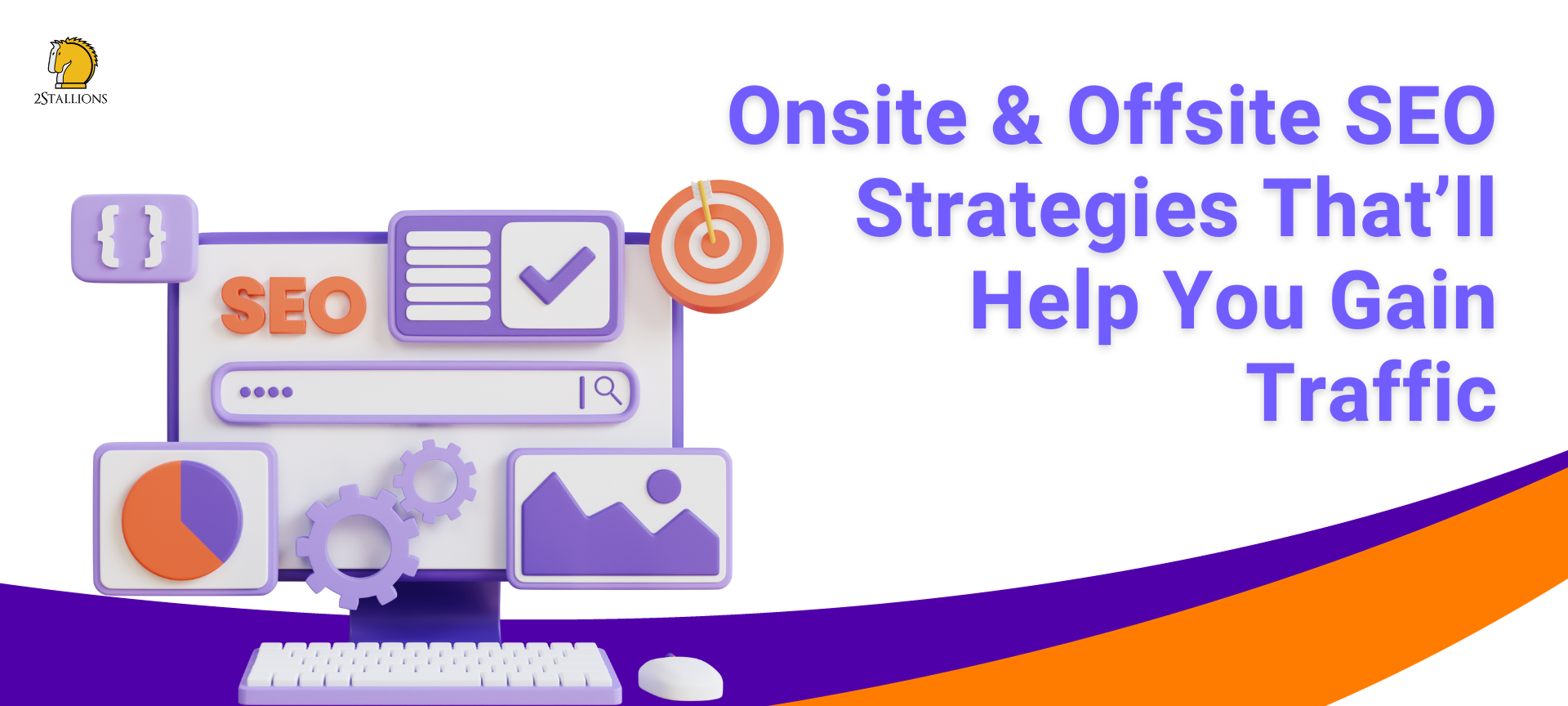
Search engine optimisation (SEO) helps increase organic traffic to your website. Companies with well-developed SEO strategies have seen massive success through search. Despite this, some companies still sit on the fence regarding the importance of SEO.
[thrive_leads id=’8325′]
In a recent survey conducted by Fractl, only 18.4% of respondents said that SEO is essential to the health of their business. Around 26% (not at all and slightly) didn’t see SEO as vital to their success. The survey also examined business owners’ understanding of how Google first determines which search results to show. Notably, over a third of business owners find SEO vague or unfamiliar.
These research findings emphasise the importance. Many owners need to understand the benefits of SEO for their business. The good news is that there is always time to get started. There are three main pillars to SEO — Technical SEO, On-site SEO and Off-site SEO. Understanding these will help you develop a proper SEO strategy to drive more targeted traffic to your website and increase sales.
Technical SEO vs. On-site SEO vs. Off-Site SEO
Technical SEO focuses on code and performance improvements on your website. Your development team should be under the guidance of an Expert SEO Strategist. The goal is to improve the code to be more friendly for search engines and optimise the speed and mobile-friendliness of your website. On-site SEO, also called On-page SEO, involves strategies implemented on a website to optimise its overall structure and make it search-engine friendly.
After developing a keyword strategy, the main elements of On-site SEO would be keyword placement and content creation on your website. Off-site SEO, commonly known as Off-page SEO, refers to optimisation strategies outside your website. This includes activities that promote your website to harvest backlinks from other sites on the Internet. SEO can be compared to a 3-legged chair, where each pillar serves as a crucial leg. The balance can only be achieved when equal attention is given to all three areas.
Technical & On-site SEO Strategies
Technical and on-site optimisation are the foundation on which off-site optimisation is built. By focusing on these, your off-site optimisation efforts will be well-spent.
1. Website Optimisation with Technical SEO
Pay attention to your overall website structure and user experience. These are two critical Technical SEO factors that directly influence your website’s success with SEO. A well-optimised website architecture takes a lot of effort. Here is a quick website optimisation cheat sheet to guide you:
-
Sitemap
This step is highly recommended, especially if your website has hundreds or thousands of pages. It helps search engine crawlers find the pages you want to appear on their search engines.
-
Link-building
As per Google Webmaster, “Cross-reference your content.” Add internal links to relevant pages within your website to increase user interaction and help search engines determine the critical pages on your website and how to get there. There are two kinds of links that you can incorporate into your web content—structural and contextual. Structural links are navigation links on your website (i.e. header, footer, breadcrumb navigation). Contextual links are links within your content; they point users to other related content (i.e. read more links).
-
Page-speed
Page speed is a critical ranking factor. If your website loads slowly, users are likely to hit the back button and look for another result. The ideal page load speed is 2.9 seconds or below. Additionally, you can refer to Google Developers PageSpeed tools to better analyse and optimise your website.
-
Responsive UI/UX
People use different devices to search on the web. That’s why you should make your website look good on any screen—mobile phones, tablets, or PCs. Furthermore, search engines like Google have switched to “mobile-first” indexing since 2019.
-
Optimise Website Security
It is of utmost importance to secure your website with an SSL certificate. This enables HTTPS and ensures encrypted data from your website to the user and vice versa. Implementing this protocol is now a ranking factor and will help your website maintain a good standing on Google.
-
Utilise Schema Markup
Schema markup, alternatively known as Structured Data Markup & Rich Results, is one of the most potent forms of SEO. It uses code (semantic vocabulary) to mark up your pages in a way that search engines find easy to understand. Google Search Central’s Documentation on Structure Data Markup reveals various forms of support-rich results that websites can choose to implement and optimise. The schema markup enables the SERP to display more context and improves CTR. The SERP looks as follows:
With your Technical SEO website optimisation, you can start working on your On-site SEO by developing and implementing a keyword strategy on your website. Let’s dive into the strategies around On-site SEO:
2. Keyword Placement
Keywords serve as the cornerstone of on-page optimisation. They represent the terms or phrases that lead searchers to your website. Optimising for them will make your website more visible on search engines. The selected keywords drive the entire on-site SEO optimisation process—from crafting content to satisfy readers to writing titles and meta tags that send the right signals to search engines. Adding keywords naturally to your website content is a critical on-site SEO activity.
You should place them strategically throughout your web content, mindful of the keyword density. By doing this right, you signal to search engines that your page’s topic revolves around your chosen keyword(s). Over time, this lets you rank better for those keywords in search engine results pages (SERPs). When focusing on keyword placement for your on-site SEO, the following areas are considered vital:
-
URL
Include your primary keyword in your page URL. This makes it easy for search engines to find and understand the topic of your webpage content.
-
Meta Title
The title tag describes the content of your webpage. Add your keyword to your title tag to increase the crawlability of your site. Note that this title shows up on SERPs rather than on your webpage.
Tip: Keep your title tag under 60 characters so it does not get cut off on SERPs.
-
Meta Description
Your meta description shows on SERPs below the title and URL. Using one of your target keywords and crafting this snippet to resonate with your intended audience can raise the click-through rate to your website from a search.
Tip: Google generally shortens snippets to 150-160 characters, so keep your descriptions around this character count.
-
Header Tags <H1>-<H6>
Maintain the header tag hierarchy across your content. Your Header/H1 is the title of your page or blog post. Aim to include your main keyword in the header tags to improve your SERP placement.
Tip: Your H1 tag should read naturally. If possible, use focus key phrases within subheadings (H2-H6) to make it clearer what the page is about.
-
Main Content Body
Adding keywords in the body of your content helps search engines identify the subject of your page and rank it in search results.
Tip: SEO experts believe an ideal keyword density is around 1-2% for a page, with one to two keywords per 100 words. Add long-tail or more specific keywords in the body.
-
Image Alt Text
Images are a great visual addition to any webpage. The priority is to provide context to the image. However, include your keyword in the alt text of at least one image on the page.
Tip: Keep the alt and title texts short. Focus on writing a descriptive text that includes your target keyword.
3. Regular Content Creation
Over the years, Google has been releasing algorithm updates to improve how content is ranked and shown to users. The QDF (Query Deserves Freshness) algorithm and the Caffeine web indexing system were among the core updates. The QDF algorithm, a component of Google’s search ranking, prioritises delivering timely and trending content to users. It detects trending queries and assesses the freshness of available content on the subject.
Content that has been recently published or updated and is deemed relevant to the trending topic is given a significant boost in search rankings. This ensures that users receive the most up-to-date information when searching for newly emerged subjects. It’s important to note that the QDF algorithm doesn’t exclusively focus on freshness; it also acknowledges the value of evergreen content that provides enduring insights.
This balance between fresh and timeless content demonstrates Google’s commitment to delivering current and valuable information to its users. Here is how you can navigate your website content based on Google’s algorithm:
-
Research Trends
Topics don’t appear magically. Writers must invest time in researching timely topics to write on Google and other search engines as fresh content. There are several ways to stay up-to-date with your industry’s latest news and trends. For starters, you can subscribe to email newsletters, visit Google Trends, use content curation tools, and follow influencers on social media.
-
Keyword Analysis
Performing regular keyword research helps discover new and fresh content opportunities. The keyword should be relevant to your niche and popular with users to attract organic traffic from your target market. Aim for keywords with a lower competitive score to have a better chance of ranking quickly.
-
Update Content
Have you been creating content on your blog for a long time? In that case, instead of producing fresh content, it is time to give your existing content a makeover. Try to reference new research, update statistics, include newer quotes, add semantic terms (long-tail keywords), link to new sources, and add updated relevant images to up the freshness factor for your older blog posts. Also, consider enhancing the readability of your content by simplifying any complex language. We recommend taking help from Editpad Paraphrasing Tool to replace difficult terms with more straightforward vocabulary, making the content easier for everyone to understand.
-
Content Calendar
An editorial calendar keeps track of your content creation process—from planning to publication. Spreadsheet programs like Google Sheets can be used to create a content calendar. It allows users to access data, edit information, and collaborate with others in real-time.
Off-site SEO Strategies
1. Link Building
Link building is a long-term off-site SEO strategy that involves building backlinks from other websites to improve your website’s position on Google rankings. According to Backlinko, there’s a clear correlation between total backlinks and Google rankings. The study found that pages with quality backlinks rank above pages that don’t have as many backlinks. The #1 result in Google has an average of 3.8x more backlinks than those in position #2-#10.
Below are some ways to generate backlinks to boost your off-page SEO:
-
Business Listing
Submit your website to relevant online business directories. While inbound links from directories are not authoritative, they still help your business to be found online.
-
Quality Content
If your blog posts offer great value to your target audience, they will likely be shared on social media and linked to other blog posts.
-
Social Media Backlinks
Although some social media platforms use ‘no follow’ tags, optimising your social media presence still makes excellent sense. Linking your website on social media still earns you a backlink.
-
Guest Post
Refers to writing a piece of content on someone else’s website. A guest post lets you link to your website, generating backlinks.
2. Local Optimisation
Local search engine optimisation (Local SEO) helps your business be more visible within local search results, where the competition to rank may be lower.
By letting Google know your physical location and your services, your business will start showing up on SERPs for potential customers within your vicinity.
These statistics make a solid case to localise your website:
- 46% of all Google searches are looking for local information. (GoGulf)
- 72% of consumers that did a local search visited a store within five miles. (HubSpot Marketing Statistics)
- 18% of local smartphone searches led to a purchase within a day, whereas only 7% of non-local searches led to a sale. (Think with Google)
- 88% of mobile searchers are more likely to contact or visit the business within 24 hours. (Nectafy)
Here are some ways to improve your local SEO:
-
Optimise for Voice Search
Most customers run voice searches to locate local businesses. One way to optimise voice search is by targeting long-tail keywords or specific voice search queries.
-
Local Business Listing
List your business on major directory and review platforms like Google My Business, TripAdvisor, Yelp, and more. Easily connect with potential customers and signal your location to Google for improved ranking.
-
Local SEO Content
Besides creating content based on local news or events, write content optimised for local keywords. For example, if you run a coffee shop business in Singapore, you can use local phrases like “kopi in Singapore” to target a more local audience.
-
Dedicated Contact Page
Ensure your website has a dedicated contact page. Include your business name, complete address, email address, and phone number on your contact page. Additionally, set up a Google My Business page.
3. Content Promotion
Content marketing plays a pivotal role in boosting your SEO. Interlinking articles is an on-site SEO technique, while promoting your articles off your website is an off-site SEO activity. Companies often spend excessive time creating content with little promotional effort. However, you should ideally spend much more time promoting your content than producing it. Here are some channels to focus on for promotion:
-
Social Media
Share your content on your social media accounts. As per the Datareportal January 2023 global overview, there are an estimated 4.76 billion social media users worldwide, so it is an excellent way to spread the word about your brand. There are three things to note when promoting content on social media:
- Choose the right channel. Some content is best shared on Facebook, while others are more suited for LinkedIn or Twitter.
- When to post your content. Social media management tools like Hootsuite can help you determine when your audience is most active.
- Use hashtags to your advantage. Research relevant hashtags for your industry as they increase your exposure, but do not overuse them.
Watch this whiteboard Friday video from MOZ to learn how to drive traffic from Facebook.
-
Guest Posting
Reach out to bloggers and media for a possible guest post submission to promote your content. Get started with the guest posting by:
- Searching for sites with good Page Authority and Domain Authority.
- Writing an outreach email to the site owner or editor. Include relevant topics to their industry and links to published works.
- Promote all your published guest blogs.
- Repeat.
-
Paid Promotion
This form of online advertising covers a variety of tactics, from paid social media to display ads, paid search and more.
- Social ads. Social media platforms let you customise the audience that would view your ads so you can target the right niche likely to want to read your content.
- Search ads. Also called search engine marketing (SEM), these ads work best for intent-based searches. Use these for targeting users who already know what they want. The most common paid search tools are Google Ads and Bing Ads.
- Display ads. This ad format displays banners across partner websites. This means you can drive awareness for your content by displaying banners on websites on the same topic as yours or to users based on their demographics.
-
Email Marketing
Engage existing customers or subscribers via email. This is probably the most effective way to promote your new content. Build a mailing list and send out monthly newsletters to everyone on the list to keep them updated on your latest stories, events, and promotions.
-
Influencer Marketing
Target influencers to help you create a buzz around your brand and specific content. Influencers, being experts or popular, can encourage people to share your content, comment on it, and build links.
Putting Together Your SEO Strategy
If you’ve made it this far and are pondering whether “Which works better, On-site SEO or Off-site SEO?” then you might be asking the wrong question. All three areas of SEO – technical, on-site, and off-site – play vital roles in helping your website rank in search engine results, building relationships with your target audiences, and growing conversions from organic traffic.
The strategies and tips we’ve discussed can be implemented at no cost and WILL lead to significant organic traffic growth results. However, they are time-consuming and require a dedicated expert to work on them. Often, companies find that working with an SEO agency in Singapore, such as 2Stallions, is a much more cost-effective solution that leads to excellent long-term results.
Master the art of SEO and boost your online presence. Learn the ropes of SEO success and pitfalls to avoid with our comprehensive guide. Download the SEO guide for a search engine boost! If you are interested in making SEO part of the digital marketing mix for your company, reach out to us. As a full-service digital marketing agency in Singapore, we can assist with your SEO, content marketing and online advertising needs to help you drive results online.
Originally published: 22 February, 2017
Updated: 23 October 2023
Elevate your digital presence with the trusted SEO firm Singapore. Our data-driven strategies will help to ensure an increase in traffic, gain leads, and success in your online campaign. Contact us now and start transforming your digital success!
Frequently Asked Questions on SEO (Search Engine Optimisation)
What is SEO in marketing?
SEO, or Search Engine Optimisation, is a digital marketing strategy to improve a website’s visibility in search engine results. It involves optimising various elements of your website and its content so that search engines like Google can easily understand, index, and rank your pages. The ultimate goal is to increase organic (unpaid) traffic to your site.
Can I Do SEO On My Own?
Absolutely, you can perform basic SEO tasks by focusing on keyword research, on-page optimisation, and quality content creation. Numerous online resources and tools can guide you through the basics of SEO. However, consulting with an SEO expert for more complex issues like technical SEO or competitive keyword targeting is beneficial.
What Is an Example of SEO?
An example of SEO would be optimising a blog post so it ranks for a specific keyword. This involves researching target keywords, including those naturally within the content, meta descriptions, and headings, and ensuring the page loads quickly and is mobile-friendly. This way, search engines can better understand the content and rank it higher in relevant search queries.
What Are 3 Main Areas of SEO?
The three main areas of SEO are:
On-Page SEO: This involves optimising individual pages on a website, including the content and meta tags, to rank higher in search engines.
Off-Page SEO: This focuses on external ranking factors like backlinks from other websites, social signals, and other online endorsements.
Technical SEO: This covers website architecture, site speed, mobile responsiveness, and other factors that could affect how search engines crawl and index your site.
Is SEO Paid or Free?
SEO primarily targets organic (unpaid) search engine rankings. While costs are associated with implementing advanced SEO strategies or hiring professionals, the traffic you gain from SEO is not directly paid for, unlike pay-per-click (PPC) advertising. However, achieving high rankings often requires time, effort, and, sometimes, specialised SEO tools or services.
[/fusion_text][/fusion_builder_column][/fusion_builder_row][/fusion_builder_container]


